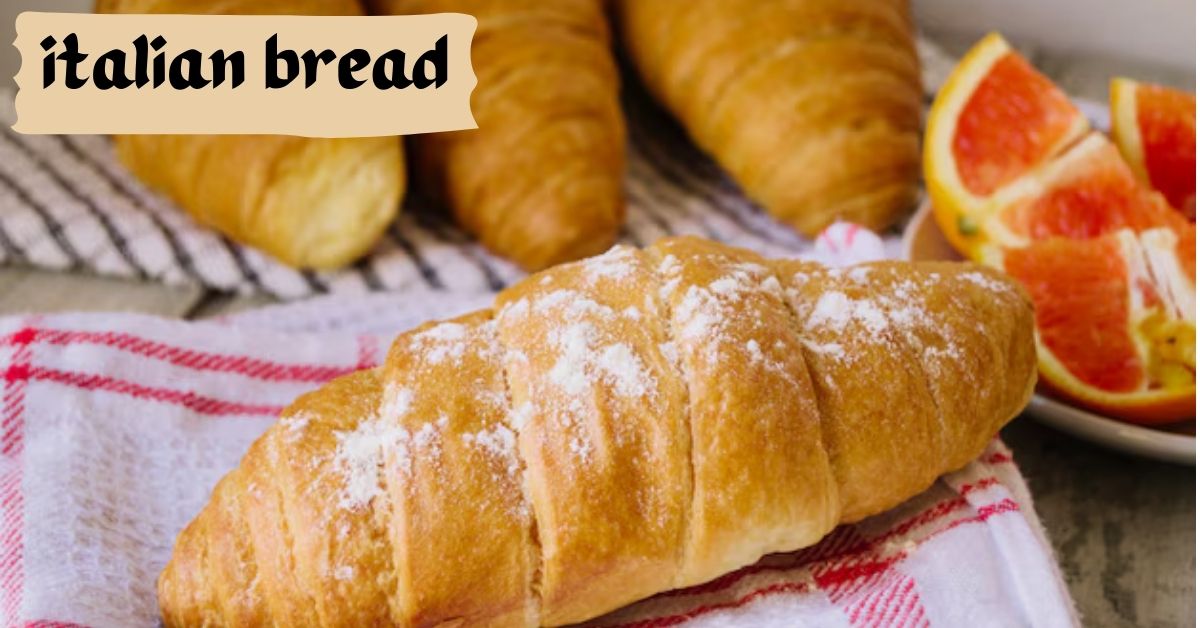Italian bread is more than just a staple food; it is a deep-rooted tradition that reflects Italy’s rich culinary heritage. From crispy ciabatta to soft focaccia, each region of Italy has its own unique bread with distinct flavors and textures. The art of making Italian bread has been passed down for generations, using simple ingredients like flour, water, yeast, and salt. However, the techniques and methods used to prepare these breads create a remarkable variety of textures, flavors, and uses. Whether enjoyed on its own, dipped in olive oil, or paired with a delicious meal, Italian bread is an essential part of the country’s gastronomy.
The History of Italian Bread
The history of Italian bread dates back to ancient times, when early civilizations cultivated grains and developed baking techniques. The Romans played a significant role in advancing bread-making by refining milling methods and introducing public bakeries. Over time, regional variations of bread emerged, each influenced by local ingredients and traditions. Today, Italian bread continues to be an integral part of daily life, representing a symbol of warmth, hospitality, and culture.
Traditional Ingredients in Italian Bread
Authentic Italian bread relies on a few simple yet high-quality ingredients. Flour is the primary component, typically made from wheat, which gives the bread its structure. Water is crucial for forming the dough, while yeast helps it rise and develop a light texture. Salt enhances the flavor, and some breads incorporate olive oil for added richness. The combination of these basic ingredients results in a variety of breads that differ in taste and texture.
Popular Types of Italian Bread
Italy is home to an extensive selection of breads, each with unique characteristics and regional significance. Some of the most popular types include:
Ciabatta: The Rustic Artisan Bread
Ciabatta is one of the most well-known Italian breads, characterized by its chewy texture and open crumb. Bakers in the Veneto region create ciabatta using a high-hydration dough, which forms its airy and irregular holes. This bread pairs well with sandwiches, and people often serve it with olive oil and balsamic vinegar for dipping.
Focaccia: The Flavorful Flatbread
Pane Toscano: The Unsalted Bread of Tuscany
Bakers make Pane Toscano without salt, giving it a mild flavor that complements robust dishes like cured meats and cheeses. This bread dates back to historical times when a high salt tax led Tuscans to eliminate salt from their bread. Its slightly dense texture makes it perfect for soaking up rich sauces and soups.
Grissini: The Crunchy Breadsticks
Bakers in the Piedmont region created grissini, or Italian breadsticks, known for their crisp, crunchy texture. They often season these thin, elongated sticks with herbs, sesame seeds, or cheese. People enjoy them as an accompaniment to soups, salads, and antipasto platters.
Pane di Altamura: The Golden Crust Bread
Pane di Altamura is a traditional bread from the Puglia region, made from durum wheat and known for its golden crust and chewy interior. Their long shelf life makes them ideal for sandwiches or pairing with soups and stews. Authorities have recognized their exceptional quality and granted them protected designation of origin (PDO) status.
Coppia Ferrarese: The Twisted Bread of Ferrara
Coppia Ferrarese is a distinctive bread from the Emilia-Romagna region, shaped into a twisted design. It has a crispy exterior and a soft, airy interior. The unique shape is achieved through a special folding technique, and it pairs well with meats and cheeses.
The Art of Italian Bread-Making
Making Italian bread requires patience, skill, and traditional techniques. The dough is carefully kneaded to develop gluten, allowing it to rise properly. Fermentation plays a key role in flavor development, with some breads using a slow-rise process for enhanced taste. Many Italian breads are baked in wood-fired ovens, which create a crispy crust and unique smoky flavor. The art of bread-making has been preserved for generations, with bakers continuing to uphold traditional methods.
Why Italian Bread Is Unique
Italian bread stands out due to its authenticity and simplicity. Unlike commercially produced bread, which often contains additives and preservatives, Italian bread is made using natural ingredients. The variety of textures, from crusty to soft, makes it suitable for different culinary uses. Additionally, the connection to regional traditions and centuries-old techniques ensures that each bread has a story to tell.
How to Enjoy Italian Bread
Italian bread can be enjoyed in many ways, depending on the type and occasion. Freshly baked bread is delicious on its own or paired with butter, olive oil, or balsamic vinegar. It serves as a base for sandwiches, bruschetta, and paninis, adding depth and flavor to each bite. People often use bread in traditional Italian meals to scoop up sauces and complement pasta dishes. They enjoy focaccia as a snack or appetizer, while they pair crunchy grissini with soups and salads.
The Role of Bread in Italian Culture
Bread holds deep cultural and symbolic meaning in Italy. It represents nourishment, hospitality, and family traditions. In many Italian households, bread is a staple on the dining table, shared among loved ones. Religious and festive occasions also feature special breads, such as Easter bread and Christmas panettone. The respect for bread is evident in the saying, “Non si butta via niente,” meaning “Nothing is wasted,” emphasizing the importance of using every part of the bread.
Health Benefits of Italian Bread
Italian bread, especially those made with whole grains and natural fermentation, offers various health benefits. Whole wheat and durum wheat breads are rich in fiber, promoting digestive health. Naturally leavened bread, like sourdough, contains beneficial probiotics that aid digestion. Additionally, traditional Italian bread avoids excessive sugar and artificial additives, making it a healthier choice compared to processed breads.
Tips for Storing Italian Bread
To maintain the freshness of it, proper storage is essential. Keeping bread in a paper bag or wrapped in a cloth allows it to breathe while preventing excess moisture. Avoid storing bread in plastic bags, as this can cause it to become soft and moldy. If bread becomes stale, it can be revived by lightly toasting or reheating in the oven. Alternatively, stale bread can be repurposed into breadcrumbs, croutons, or used in traditional dishes like panzanella.
Conclusion
Italian bread is a timeless culinary treasure that embodies tradition, culture, and craftsmanship. From the rustic ciabatta to the flavorful focaccia, each type of bread tells a story of regional heritage and artisanal skill. Whether served alongside a hearty meal or enjoyed on its own, it remains an essential part of the dining experience. By appreciating the techniques and ingredients that go into making authentic Italian bread, one can truly savor the rich flavors and history behind this beloved staple.
FAQs
What is the most popular type of Italian bread?
Ciabatta is one of the most popular Italian breads, known for its airy texture and crispy crust.
Why is Tuscan bread made without salt?
Tuscan bread is unsalted due to historical salt taxes, which led bakers to omit salt, creating a unique, mild flavor.
How is focaccia different from pizza dough?
Focaccia dough is thicker, softer, and often infused with olive oil, while pizza dough is thinner and crispier.
What makes Italian bread different from other breads?
It uses simple, high-quality ingredients and traditional techniques, resulting in distinct flavors and textures.
Can Italian bread be made at home?
Yes, many Italian breads can be made at home with basic ingredients and proper kneading and fermentation techniques.

